Class E Surface Area
Permission is required.
Class E Surface Area is depicted on the sectional with a dashed magenta line – – – – -.
Sometimes Class E airspace goes all the way down to the surface of the ground. This is called Class E surface area.
In general, we don’t need permission to fly in Class E airspace. However, there is one MAJOR exception that applies to paramotors/ultralights. It can be found in the wording of FAR 103.17 “No person may operate an ultralight vehicle within . . . the lateral boundaries of the surface area of Class E airspace designated for an airport unless that person has prior authorization from the ATC facility having jurisdiction over that airspace.” These areas are shown on the sectional chart with a dashed magenta line.
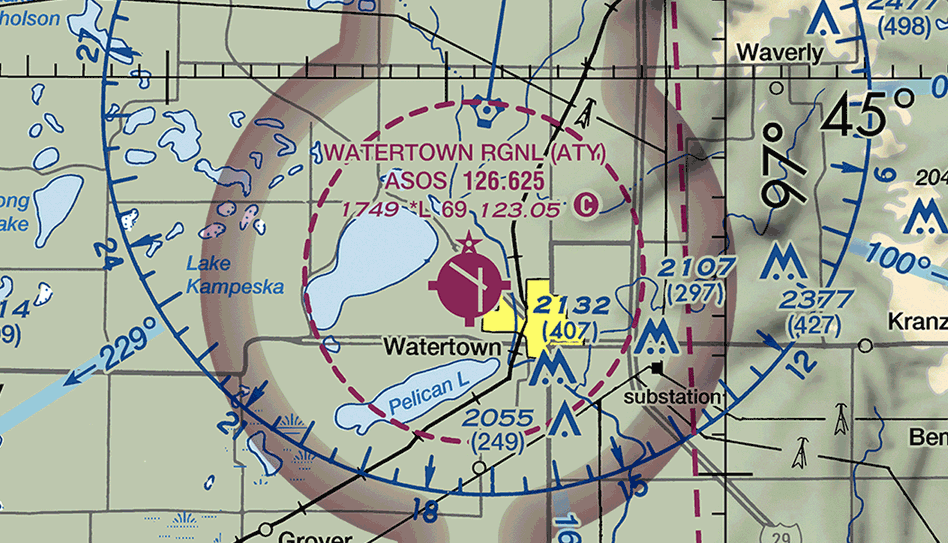
There’s more to know…
FAA documents specify 2 types of Class E Surface Area:
- Designated for an airport (we need permission)
- Designated as an extension (we don’t need permission)
Designated for an airport – We need permission
You can identify these areas because they are inside a continuous dashed magenta line (like you see in the image above). We need permission. Here is an example:
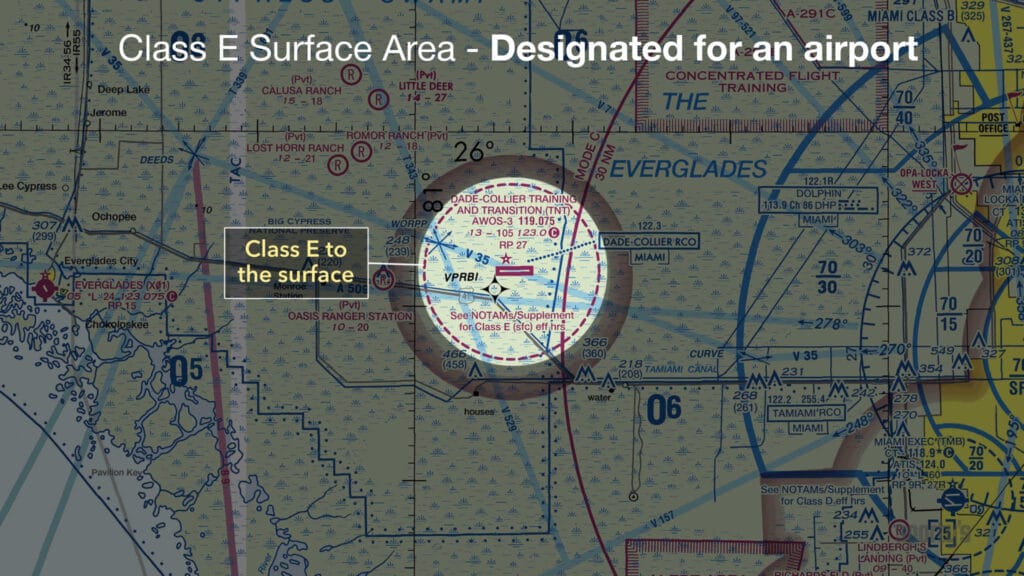
Designated as an extension – We don’t need permission
You can identify these areas because they are not part of the continuous dashed magenta line. They are added as a separate extension to the original airport line. We don’t need permission. Here is an example:
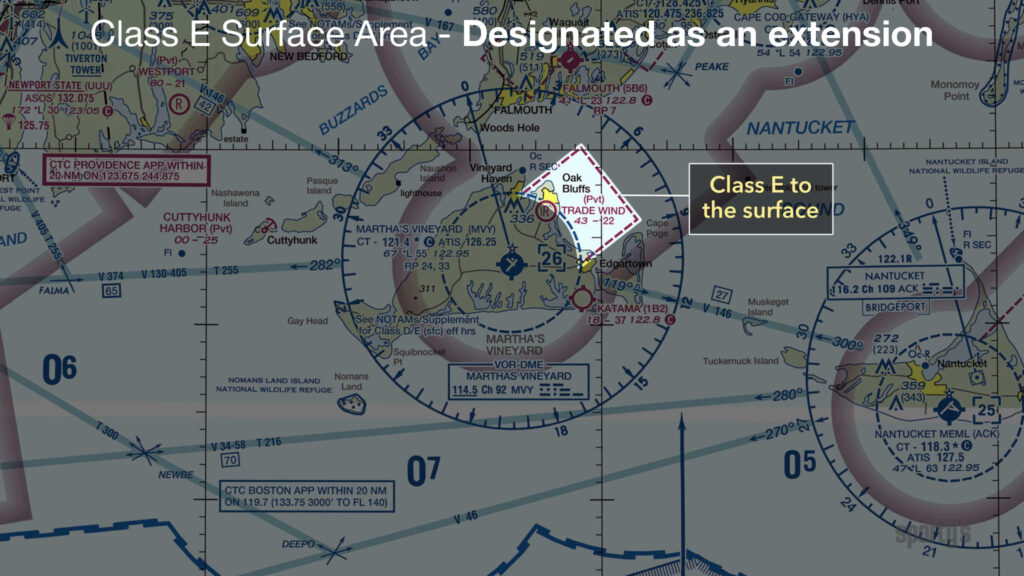
USHPA published an article explaining how the FAA confirmed that paragliders can fly through Class E surface areas designated as extensions. The explanation is summarized below:
Due to a congressional order relating to drones, the FAA was forced to review their long-standing stance that Class E extensions were included in the restriction as they were “designated for an airport.” To comply with the order, the FAA issued a somewhat obscure memorandum in January 2018, specifically for the drone community, that states, “Class E airspace designated for an airport” only requires prior authorization if the airport falls within the Class E airspace.
USHPA – Bob Posey Nov/Dec 2020 – Read Article Here
Since FAR 103 (Ultralight) has nearly identical airspace language as FAR 107 (Small Unmanned Aircraft), it seems logical that the change would apply to us. It’s taken years, but we’ve finally received verbal confirmation from the FAA Airspace Rules and Regulations division that it does apply to operations under FAR 103 (including hang gliding and paragliding), and they’ll be (hopefully) updating the preamble to clarify this point.
These images below are taken directly from the FAA memorandum
You can see in the descriptions which surface areas would require permission and which ones would not.
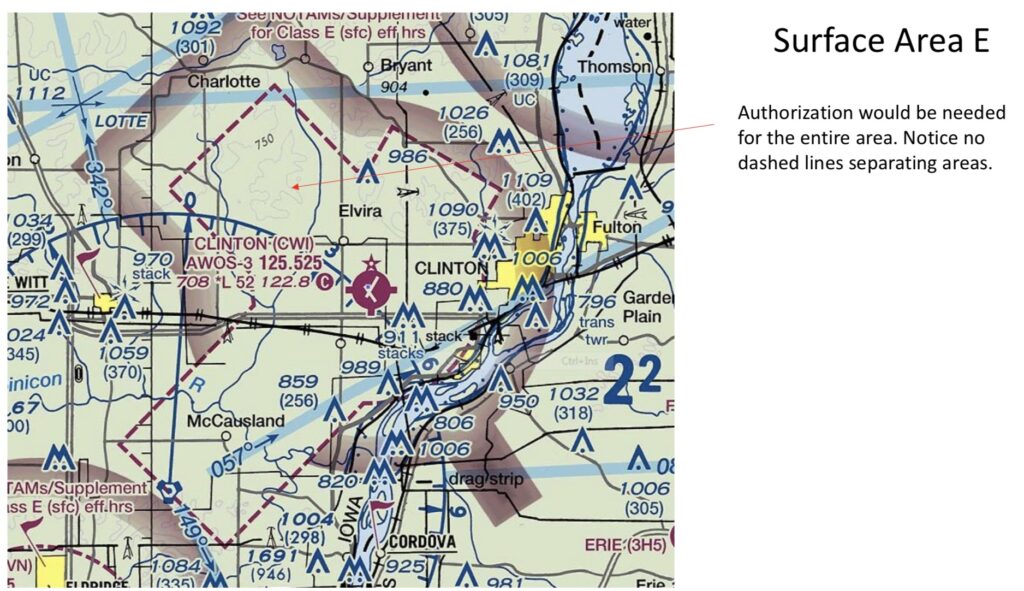
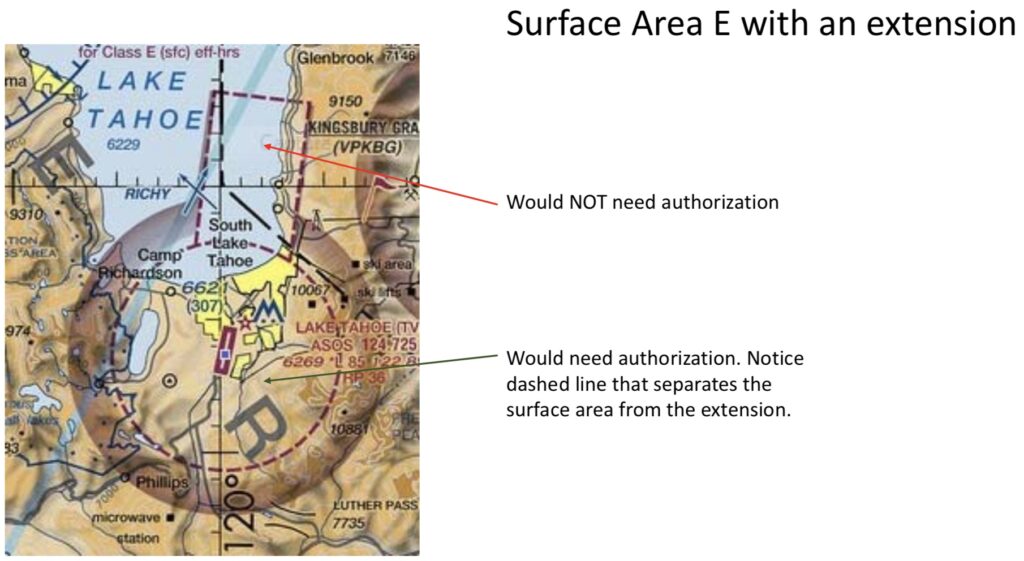
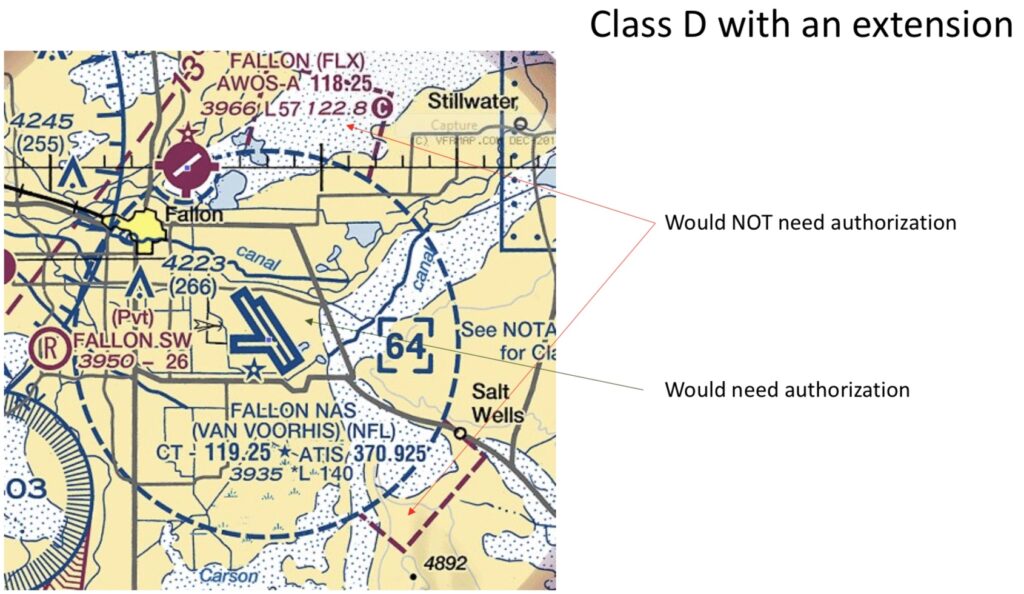
Jeff Goin also wrote 2 great articles on FootFlyer covering this topic:
Class E Surface Area – https://www.footflyer.com/class-e-surface-area/
Class E Surface Area Visual – https://www.footflyer.com/class-e-surface-area-visual/
